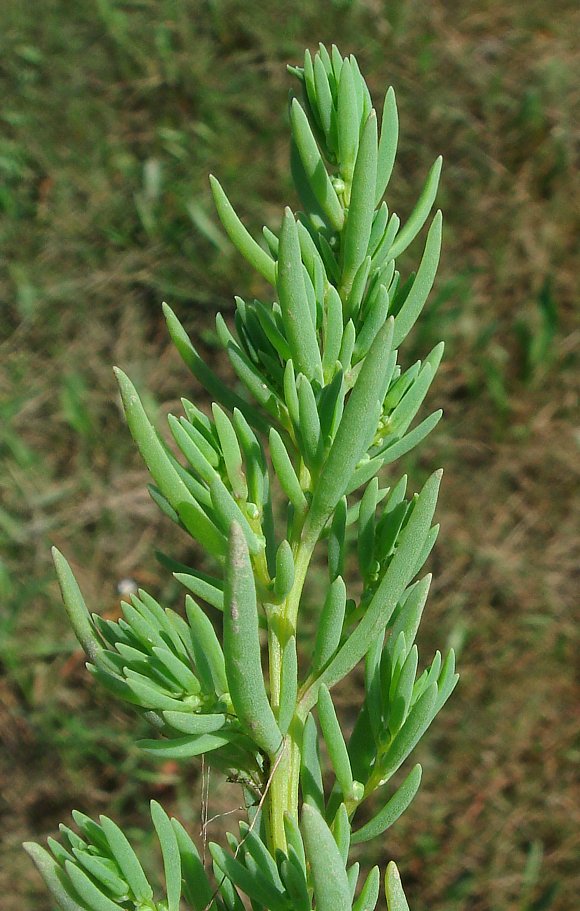If you could choose one wild plant to become a commercial product, what would it be?
 Many people have tried to make poke weed (Phytolacca americana) a green in your local grocery but toxicity and the required two-boilings have always plagued its commercialization. The ground nut (Apios americana) was one of the original exports from colonial America but it has at least a two-year growth cycle. Louisiana State University (1984-96) developed a commercial variety but the program disappeared when the professor-in-charge, Bill Blackmon, changed colleges. In 1962 Professor Julia Morton of the University of Miami recommended Spanish Needles (Bidens pilosa) become a commercial product. A half a century later that hasn’t happened, perhaps because of flavor or the fact it can grow almost anywhere as a weed. My candidate would be Suaeda linearis, Seablite, and if I could figure out how to do it I would.
Many people have tried to make poke weed (Phytolacca americana) a green in your local grocery but toxicity and the required two-boilings have always plagued its commercialization. The ground nut (Apios americana) was one of the original exports from colonial America but it has at least a two-year growth cycle. Louisiana State University (1984-96) developed a commercial variety but the program disappeared when the professor-in-charge, Bill Blackmon, changed colleges. In 1962 Professor Julia Morton of the University of Miami recommended Spanish Needles (Bidens pilosa) become a commercial product. A half a century later that hasn’t happened, perhaps because of flavor or the fact it can grow almost anywhere as a weed. My candidate would be Suaeda linearis, Seablite, and if I could figure out how to do it I would.
Seablite has everything going for it except perhaps for its name. It’s mild but tasty, has excellent texture, can be eaten raw or cooked though cooked is the usual way. It’s nutritious, stores well, looks good, easily grows in salty ground (read unused land) and even feels good to handle. About the only downside, for me, is that I have to drive about 60 miles to get some. I need to introduce it to my garden.
Think of Seablite as a Chinopodium that likes to grow in salty places, either near the ocean or salt licks. It has a high sodium content but boiling reduces that significantly. If you live anywhere near the ocean or inland salty areas, now and the next few months is the time to go looking for seablite and seepweeds.

